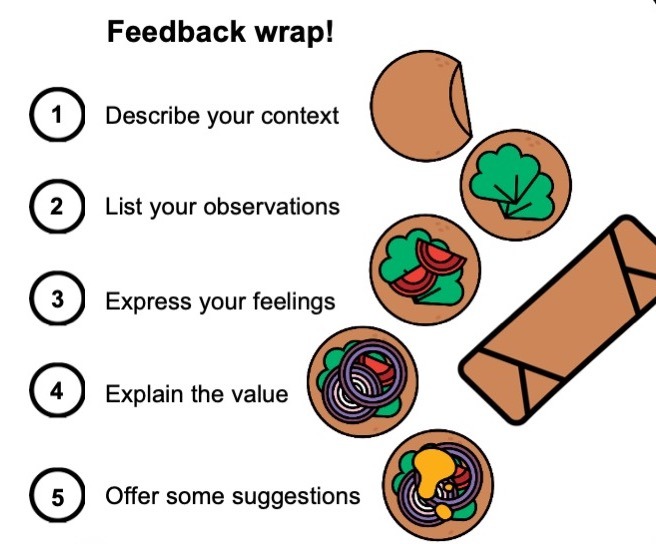Feedback Wrap: The Key to Effective Feedback in Management 3.0
✨ Turn feedback into a game-changer! "Feedback Wrap" is a powerful Management 3.0 technique that blends facts, emotions, and values to create meaningful, trust-based conversations that drive real improvement. 🚀
Lautaro Martín
3/24/20253 min read


Introduction
Feedback is a fundamental tool for personal and professional growth, but it is often given ineffectively, causing resistance or even conflicts. Within the framework of Management 3.0, there is a technique called "Feedback Wrap", which aims to transform feedback into a constructive, frequent conversation based on mutual respect.
📌 In this article, we will explore what this practice is, why it is valuable, how to apply it, and what lessons it leaves us as facilitators.. 🙌
🎯 Understunding the practice
The "Feedback Wrap" is a structured approach to feedback that follows five key steps:
1️⃣ 📝 Describe the Context: Before giving feedback, it is essential to establish the context in which the feedback provider is situated. This helps the recipient understand their interlocutor’s state and fosters a trust-based environment.
2️⃣ 👀 Share Observations: Instead of making assumptions or interpretations, one should describe concrete and verifiable facts.
3️⃣ 💬 Express Emotions: Sharing the emotions provoked by the situation is crucial instead of merely judging or criticizing.
4️⃣ 🔗 Order by Value: It is important to connect the observation with a value or principle relevant to the person or organization. Ideally, feedback should be structured in a sequence from the most to the least important to ensure the key message is understood first.
5️⃣ 💡 Suggest Improvements: Finally, rather than imposing solutions, concrete actions for improvement can be suggested.
🔹 This structure makes feedback clear, empathetic, and effective, preventing the recipient from perceiving it as an attack.
What Motivated Me to Use This Practice
I decided to implement "Feedback Wrap" after noticing that in one of the teams I was collaborating with, communication was not flowing. We held weekly sessions with collaborative dynamics, but even when using open-ended questions, silence was the main character of the story.
🚀 I wanted a way to structure feedback so that it would be well received and promote a culture of trust and learning.
Additionally, in an agile and dynamic environment, feedback is essential for continuous improvement. We needed a mechanism that encouraged open and constructive conversations and, most importantly, built trust.
Implementation
📌 To introduce the practice, I organized a training session where we explained the five steps with practical examples and conducted group exercises to practice it in a safe environment.
Following the collaborative facilitation, the team decided on the following actions:
✅ A weekly feedback session would be established within the team.
✅ Each week, team members would choose another member to receive feedback on a topic of interest.
✅ The person chosen each week must be different from the one selected the previous week.
Learnings and Conclusions
After applying this practice for several months, trust among team members increased significantly due to the creation of a one-on-one, intimate, and trustworthy space that allowed them to connect as human beings.
Additionally, the following observations were made:
🔹 Context and facts matter greatly: People receive feedback better when it is based on concrete observations rather than subjective opinions.
🔹 Empathy makes a difference: Expressing how an action made us feel fosters more connection and receptiveness.
🔹 Practice is essential: Not everyone is used to giving or receiving feedback in this way. It takes time and practice to do it naturally.
🔹 Positive feedback is also key: It is not just about pointing out areas for improvement but also about reinforcing what is done well. The combination of both strengthens trust and team development.
📢 Ultimately, "Feedback Wrap" has been a powerful tool for improving team communication, fostering learning, and building a healthy and effective feedback culture.
💬 Have you used "Feedback Wrap" with your team? How was your experience? Share your thoughts below! 👇.




